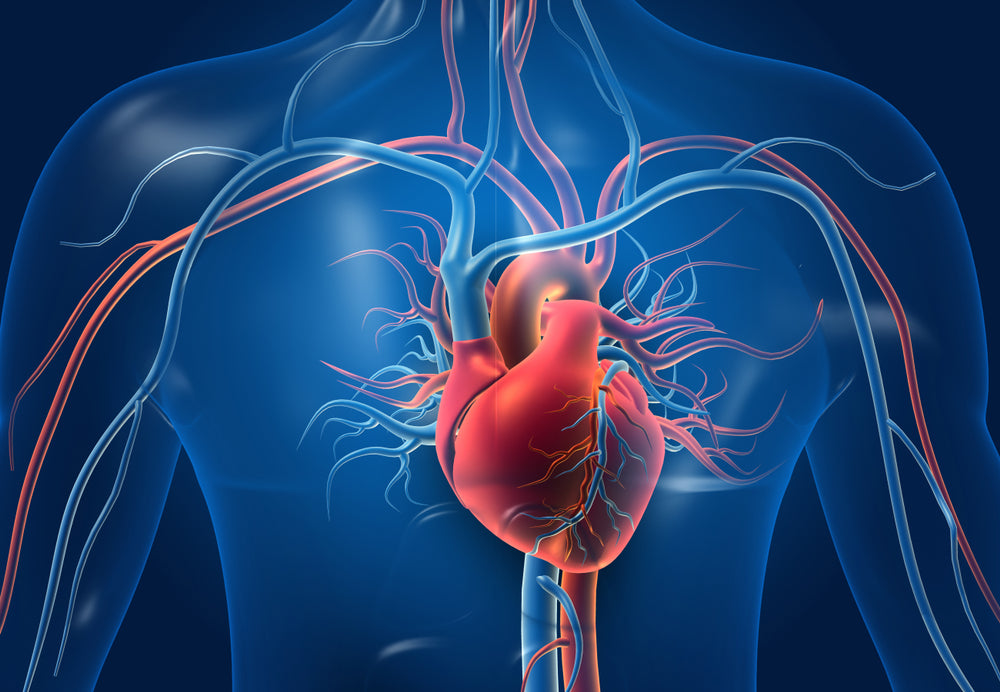The leading cause of death in the United States, cardiovascular disease is the one of the biggest challenges to our national health. But you can reduce your risk of developing CVD just by adopting healthy lifestyle choices and being aware of the risk factors and symptoms associated with heart issues like coronary artery disease.

The Facts about Cardiovascular Disease
The impact of heart disease on Americans is staggering, affecting people across all ethnic and gender divides. It's likely you know or have known a person affected by heart disease:
-
Every 37 seconds, an American dies from cardiovascular disease.
-
647,000 Americans die of heart disease every year, comprising 1 in every 4 deaths.
-
The cost of heart disease is $219 billion a year in the U.S., including health care and medication costs as well as lost productivity.

Types and Symptoms of Heart Disease
Heart disease can stand for a wide range of different conditions that can affect your heart in different ways, or affect specific parts of your heart. These can include:
-
Coronary artery disease.
-
Arrhythmias: problems with the heart's rhythm.
-
Congenital heart defects: heart problems existing from birth.
-
Dilated cardiomyopathy: a weak heart muscle.
-
Endocarditis: heart infection.
- Heart valve disease.
Many people also say "heart disease" when talking about cardiovascular disease, which usually involve narrowed or blocked blood vessels and can lead to heart attacks, stroke, or angina.
Coronary artery disease
This occurs when the arteries harden and narrow in the damaged surface of arteries (a process called atherosclerosis) due to a buildup of cholesterol, which becomes a plaque, a surface bump that blocks blood flow. When this blocks the coronary arteries responsible for blood flow to the heart, this is coronary artery disease.
Coronary artery disease is the most common form of heart disease, affecting 18.2 million Americans over age 20.
Coronary artery disease can manifest in several ways, such as stable angina (chest pain) or a blood clot resulting from a ruptured plaque. This clot may cause an unstable angina, which is merely painful but dissolves, or can block the artery fully and cause irreversible damage in the form of a heart attack.
Symptoms of coronary artery disease can include:
-
Angina: chest pain, discomfort, tightness, or pressure.
- Shortness of breath.
-
Symptoms in the extremities: pain, numbness, weakness, or coldness in affected legs or arms.
- Pain in the jaw, neck, upper abdomen, or back.

Arrhythmia
We're focusing on coronary heart disease today, but you'll want to watch out for signs of arrhythmia, too. A heart arrhythmia is an abnormal heartbeat that might be too quick, too slow, or irregular. Symptoms can include:
-
Palpitations: fluttering in your chest.
-
Tachycardia: racing heartbeat.
-
Bradycardia: slow heartbeat.
- Chest pain or discomfort.
- Shortness of breath.
- Dizziness.
- Lightheadedness.
-
Syncope: fainting or near fainting.
There are many different types of arrhythmias with a number of causes. They may indicate the existence of other forms of heart disease, so recognizing an arrhythmia is vital.

Risk Factors
Some heart disease risk factors are inherited, and there are occasional differences in likelihood between different groups of people (for example, men are slightly but consistently more likely to develop it than women). However, many risk factors are based on lifestyle choices. They include:
-
Diet: diets high in saturated fat, trans fat, or cholesterol can raise cholesterol levels. High-sodium diets can increase blood pressure.
-
Diabetes: increases your stroke risk and often paired with high blood pressure, high blood cholesterol, and obesity.
-
High Blood Cholesterol: excess cholesterol can create blood clots.
- High Blood Pressure.
-
Obesity: a cofactor in many conditions that lead to stroke.
-
Physical Inactivity: increases your risk of other conditions that lead to stroke.
-
Smoking: damages the cardiovascular system.
- Age.
- Family history of heart disease.
-
Personal history of preclampsia: sudden swelling and rise in blood pressure during pregnancy.

Prevention and Treatment
Much of heart disease prevention is simply about making smart lifestyle changes and sticking with them. Some ways to reduce your risk of heart disease can include:
-
Exercise: Aim for at least 30 minutes a day, 5 days a week of moderate exercise. (Don't forget to make use of Mountain Ice pain relief gel when soreness sets in, especially when starting a new exercise regimen.)
-
Eat healthier: Eat a healthy diet high in fruits & vegetables, nuts, seeds, and whole grains. Avoid added sugars or foods high in sodium or saturated fats.
- Maintain a healthy weight.
- Don't smoke, or quit if you smoke.
-
Limit alcohol intake: alcohol can raise your blood pressure.
-
Manage your stress level: stress can raise blood pressure, or lead to poor lifestyle choices like an unhealthy diet, drinking too much, or smoking.
- Monitor your blood pressure and cholesterol.
- Sleep for at least 7 hours per night.
Treating heart disease will involve adopting a healthy lifestyle as well, but the most vital methods of treatment are medications and surgery.
Medications may include:
-
Statins: which lower cholesterol.
-
Blood thinners: to prevent blood clots.
-
Beta-blockers: which treat heart attacks, heart failure, and high blood pressure.
-
Angiotensin-converting enzyme (ACE) inhibitors: which treat heart failure and high blood pressure.
Heart surgery may also be an option for more severe cases. This is complex, demanding surgery that comes with a long recovery time. Methods may include:
-
Angioplasty: widening narrowed blood vessels with a balloon catheter.
-
Coronary artery bypass surgery: which redirects blood flow around a section of blocked artery.
- Heart valve repair or replacement.
-
Inserting heartbeat regulators: pacemakers or electronic regulators for those with arrhythmia.






Leave a comment